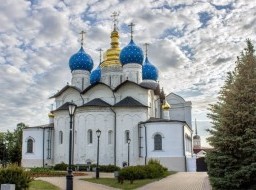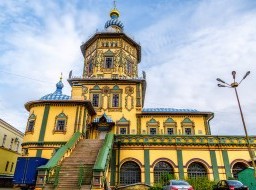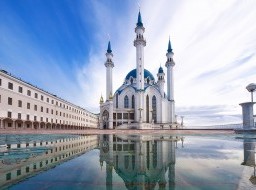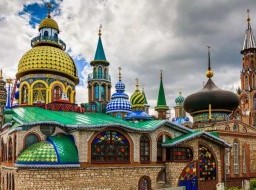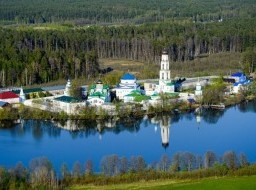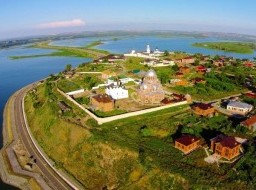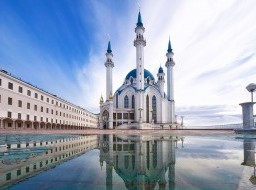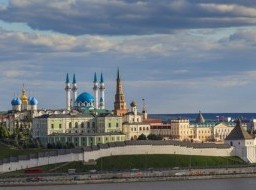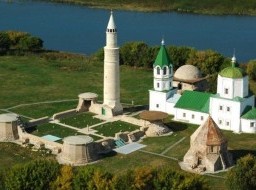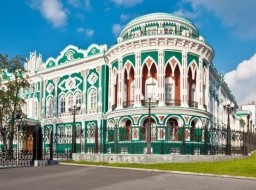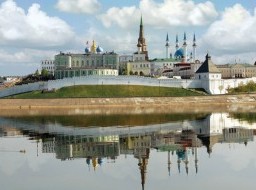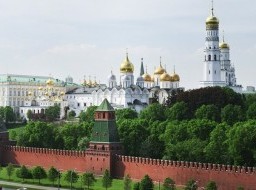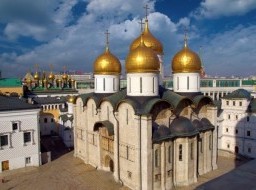Annunciation Cathedral
Annunciation Cathedral of Kazan Kremlin was the first Orthodox church within the walls of the Kazan Kremlin. Initially, a wooden church was quickly built under direction of Tsar Ivan IV in 1552, before it was replaced by a stone cathedral. The cathedral became the center of religious and educational life and missionary efforts in the province of Kazan. History The present day great stone cathedral was preceded by a small wooden church built at a spot specified by Tsar Ivan IV (the Terrible) within the half destroyed walls of the Kazan kremlin. Construction of the wooden church began on October 4, 1552, and was completed in three days, on October 6, 1552. The church was named in honor of the Annunciation of the Most Holy Virgin. Ivan himself outlined the foundation of the church and marked with a cross the intended place for the bishop's throne. The throne was placed in use on July 28, 1555, when Archbishop Gury arrived and was enthroned as the first bishop of the diocese of Kazan. Through the centuries the cathedral was ravaged many times by fires. The worst events were in 1596, 1672, 1694, 1742, 1749, and 1757. The repairs and additions made after each fire changed the cathedral significantly; side altars were extended, church porches were added, and cupolas were altered. The most destructive fire was that of 1815. In this fire, that burned down a good part of the city, the cathedral was largely destroyed. Extensive changes were made during its restoration that greatly changed the exterior of the cathedral. Also, a new iconostasis was incorporated that followed the design of the original iconostasis of the early years of the stone cathedral. Many hierarchs and priests associated with the cathedral were buried in the cathedral. Among these were Archbishop Tikhon I (Khvorostinin) (1575-1576) and Metropolitans Lavrenti II (1657-1673) and Markell (1691-1698) who were buried under the heavy vaults of the basement. The bodies of Archbishops Kazansky Afanasi (1857-1866), Vladimir II (Petrov) (1892-1897), and Dmitri Sambikin (1905-1908) were buried in the All Saints church tomb. This tomb was consecrated in 1896 by Archbishop Kazansky Vladimir. Other archpriests were buried in various places in the cathedral. The relics of the first bishop of Kazan, Abp. Gury have also been associated with Annunciation Cathedral since its inception. In 1630, St. Gury's relics were moved to the cathedral and became the principal relics held by the cathedral. Over the years the relics were moved to various places in the cathedral, before they were taken to the Church of the Varoslavl miracle-makers, in 1918. In 1841, his cell was found under the side church of Ss. Boris and Gleb. |

